Eyesore. Nightmare. Fixed.
Although most of my yard is finally getting into shape for spring, I still have what I consider to be two "eyesore" beds. These are beds that may have been fine last year, but late season and winter and early season weeds have made them less-than-delightful, and seeing them every day makes me feel terrible about my garden. It doesn't help that they're adjacent to each other, right next to the bamboo that lost all of its leaves this winter. Makes this area pretty depressing.
This was my wildflower and annuals bed, and even though it got a mid-season makeover last year, it's pretty much a wasteland now. Well, unless you're a weed -- then it's a paradise. Can you even tell where the bed is in the photo above?
The main problem is that since it was a wildflower bed and I expect several of the flowers to reseed, there's minimal work you can do. You can't hoe, or mulch, or anything else to stop the weed seedlings from growing up because the "good" seedlings are in there too. So the answer is to hand weed, which I don't mind doing to some extent, but this bed really has a lot of weeds in it:
It looks mainly like violets, and it's difficult to see any desirable plants in there at all. They're in there though. There's some Agastache (perennial):
A few annual Gaillardia, which I just love:
Some Rudbeckia (black-eyed Susan) which may be regular, may be 'Prairie Sun' with the green eye, or may even be 'Cherry Brandy', which has red flowers. The regular ones are so common in my yard, but the others aren't and I really love them, so in the chance that these are those others, I'm saving them:
One cornflower (aka "Bachelor's Button"):
Oh, and hundreds of Cleome seedlings:
I'm not concerned about the Cleome, but I will dig up the others for replanting or potting:
Why did I dig them up? It's because I've decided to scrape this bed clean!
I'll start by outlining the bed:
That doesn't really help, as it's still hard to see where the weedy bed ends and the weedy lawn begins. How about looking at it from the other end?
A little better, but still hard to see.
So I'll just start scraping with my flat-bladed spade, making sure to get underneath any violet rhizomes:
There are several dandelions in here too, and as you probably know their roots have to be pulled out or they will just sprout again. So I made sure to dig up the dandelions first before scraping over them.
One thing I don't like about "clear cutting" a bed like this is it disturbs the wildlife here. Besides the dozens of earthworms that lost their lives beneath my spade, there were grubs of different kinds:
Spiders:
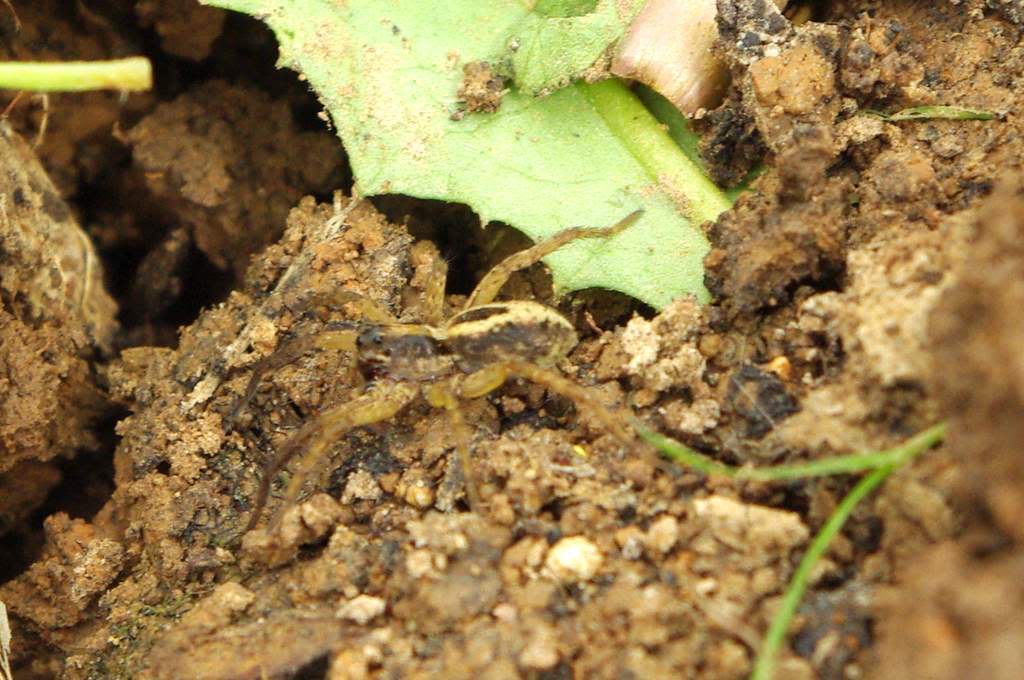 |
| Great camouflage or terrible photo? You be the judge. |
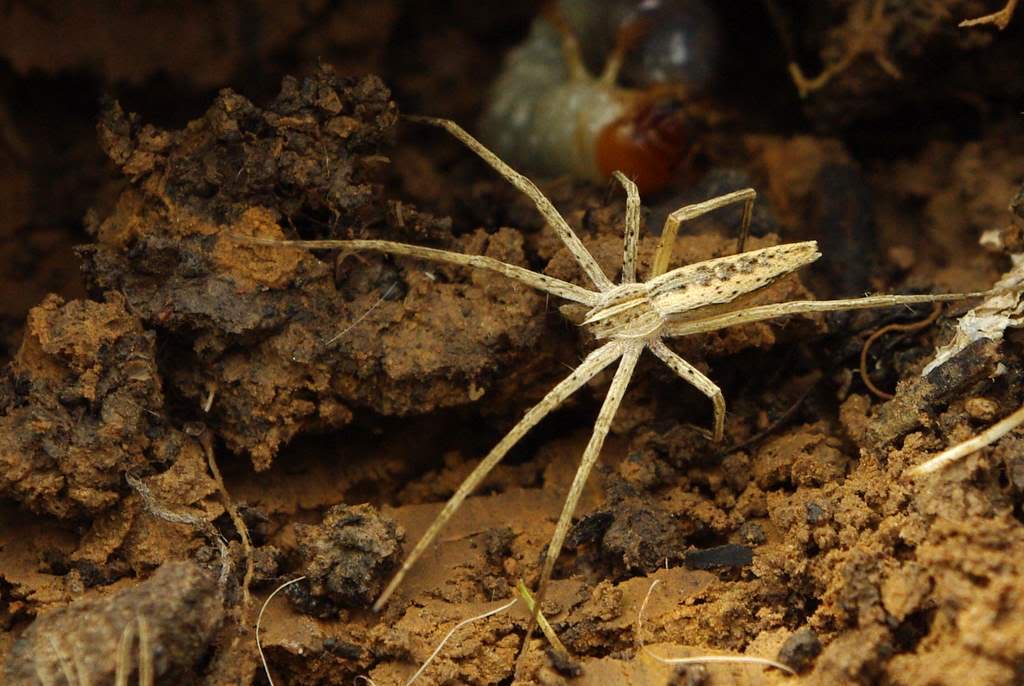 |
| Don't look now Mr. Spider, but there's a creepy grub behind you! |
What will most likely be a moth of some sort:
And who knows how many other types of critters. I may not like them all, but they're an essential part of the ecosystem here, which I'm now disrupting. The key though is that I am just disrupting and not destroying, so things will return to normal for these creatures soon enough.
After just 10 minutes or so, good progress has been made already. Pulling these weeds by hand would have taken hours.
A bit more time and a few wheelbarrow trips to the compost pile, and the bed has been cleared:
Now it's time to figure out where some plants are going to go. Since the perennial Agastache are in the center of the bed, I'll add some more of those there, along with some of the purple fountain grass I overwintered, and an Elephant Ear:
The soil in this bed is the worst in my yard -- heavy, sticky clay:
It's pretty wet right now, but I have no choice but to keep going with the planting. Here you can see where amended soil from a hole I planted last year (black soil) contrasts with the unamended soil (brown clay):
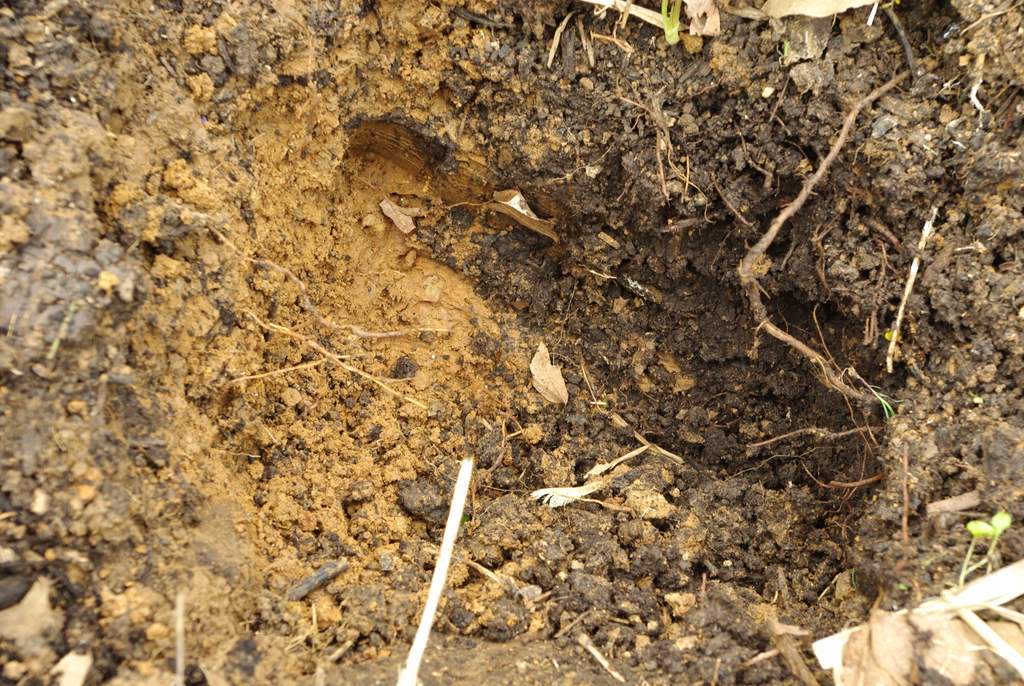 |
| It is not easy to take a good photo of a hole. |
This will help replace some of the soil I scraped off earlier. The planting holes were refilled with looser soil and compost -- you're not going to help out any plants if you backfill their planting hole with little lumps of wet clay.
To the terrible soil on top of the bed now, add a few inches of leaf mold compost:
and this bed makeover is just about finished for now -- or at least it's a start.
There's room for more plants, and hopefully the compost will start loosening up the clay soil so future planting will be simpler. It looks a bit different from the "before" photo, doesn't it?
I'm not overly fond of the black "compost as mulch" look, as it seems too dark to be natural (probably because our soil isn't dark like that here) but I know that the dark color will disappear as the plants grow and fill in, so there won't be that much mulch to look at anyway.
I'm planning on adding more plants once these get larger and hopefully provide some protection from deer. That's one good thing about a crowded bed like I had before: the deer can't find the "good" plants so easily.
Now just one more nightmare bed to "clear cut"... or is it two?
.

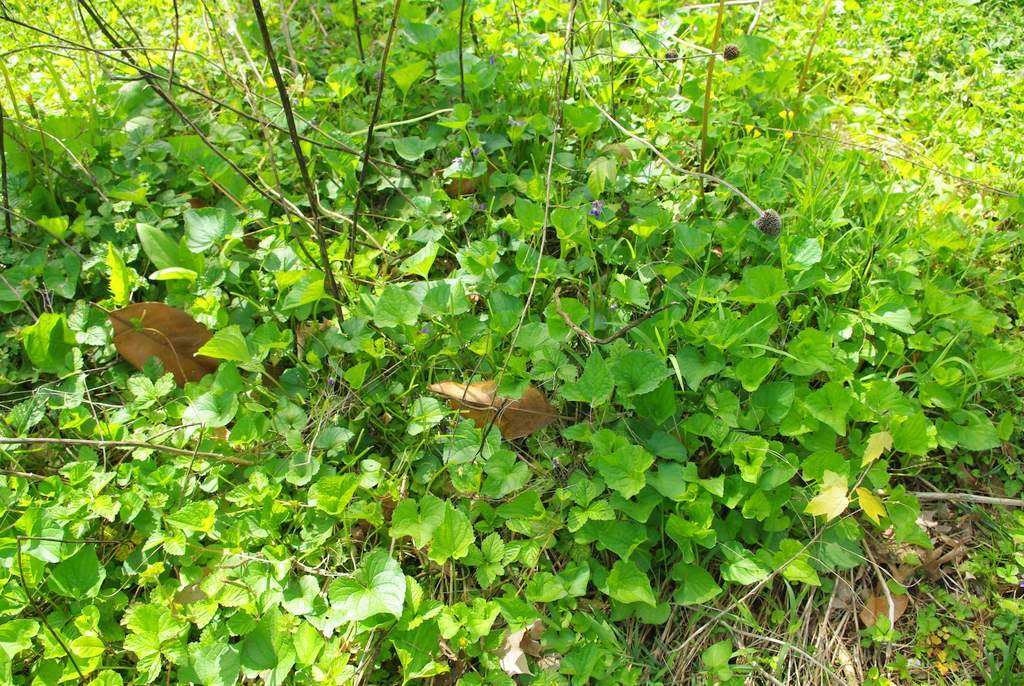

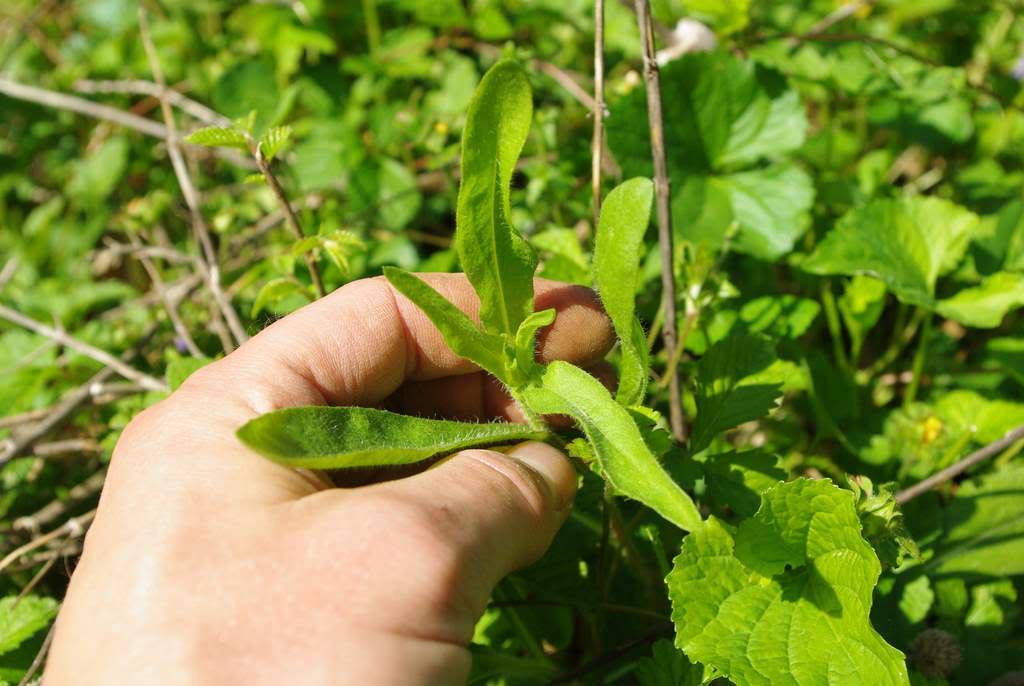
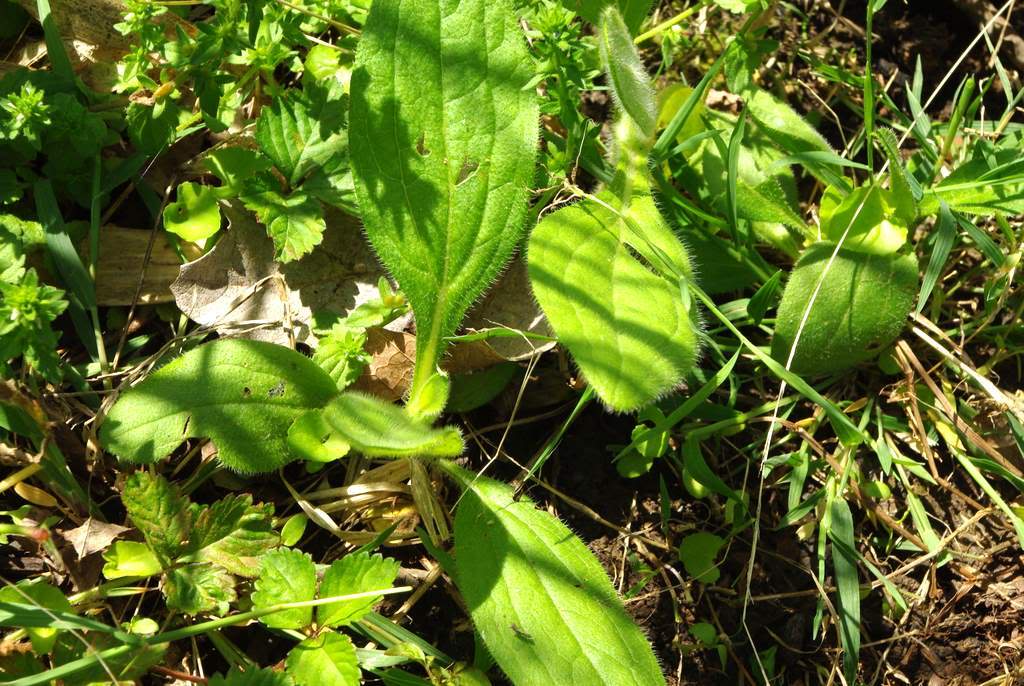

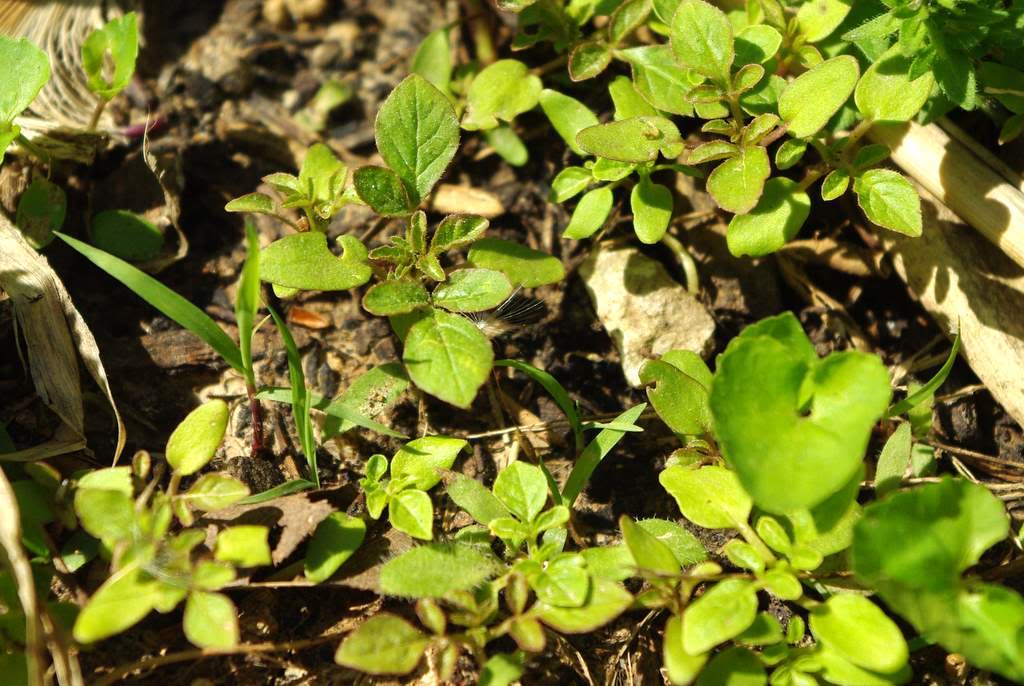
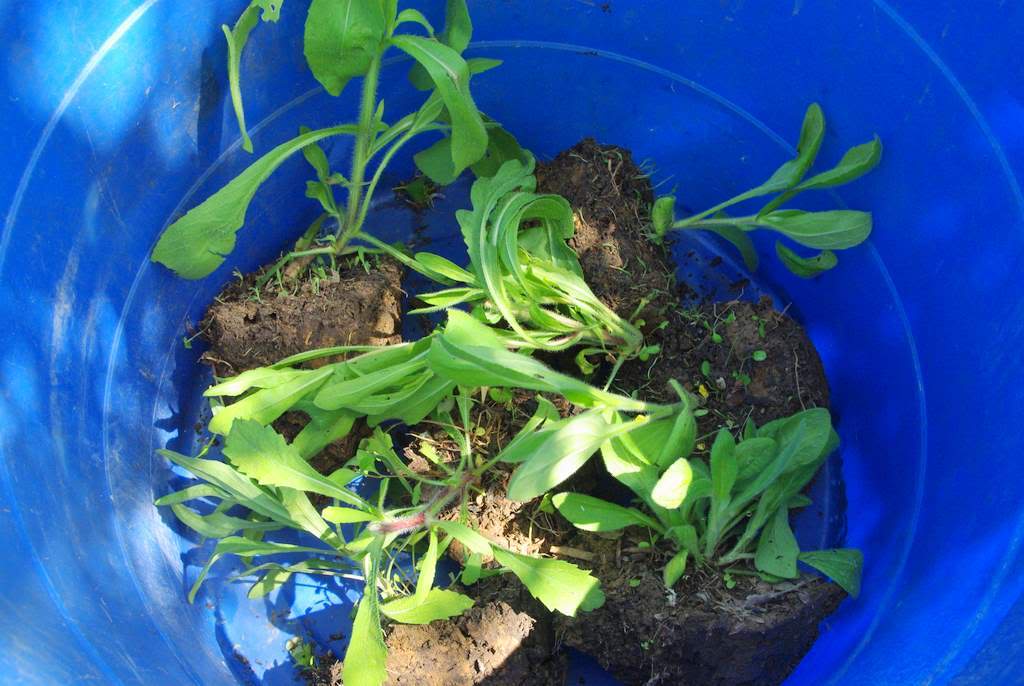
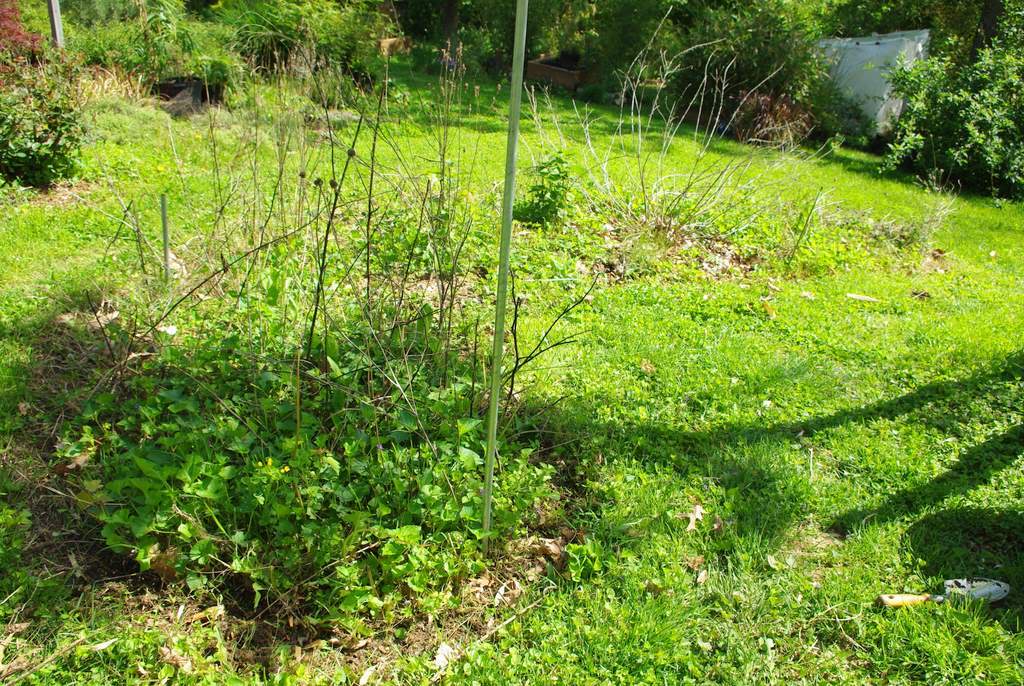
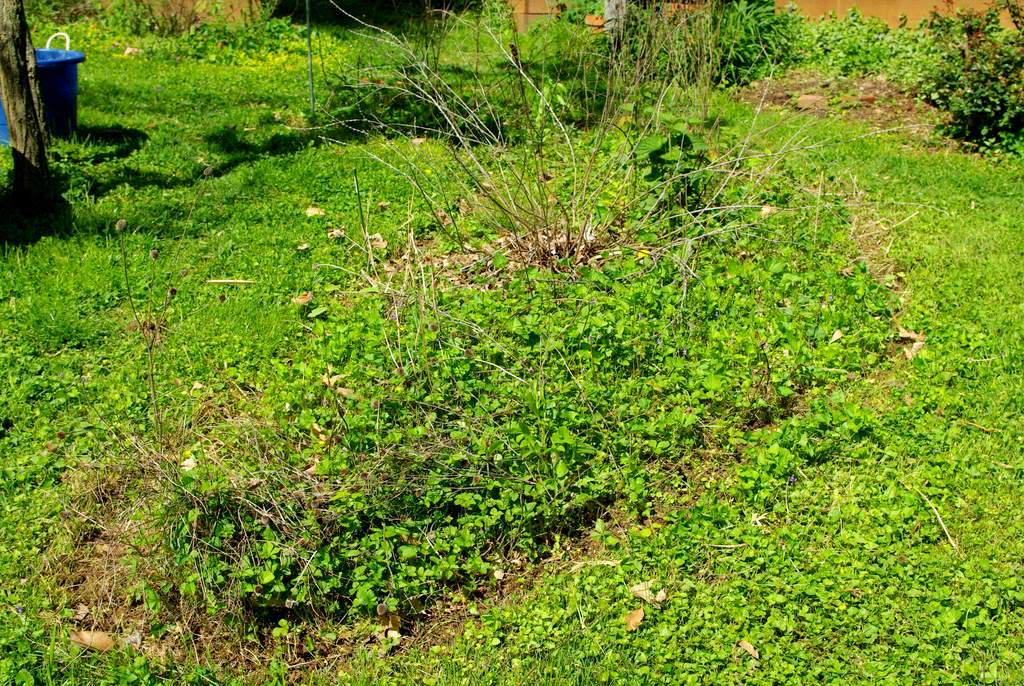
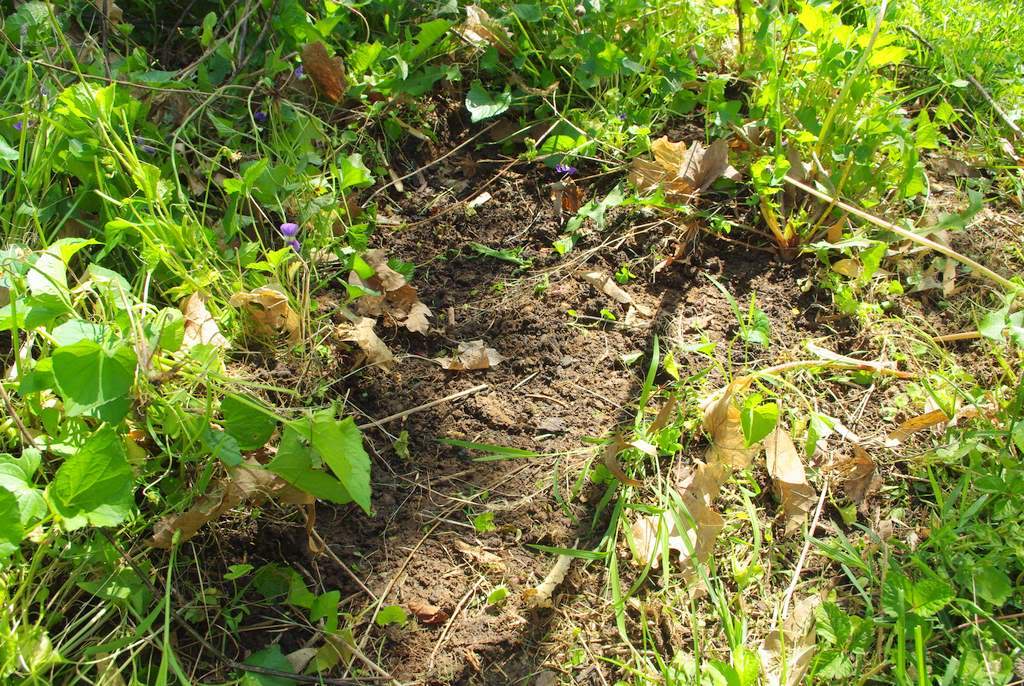
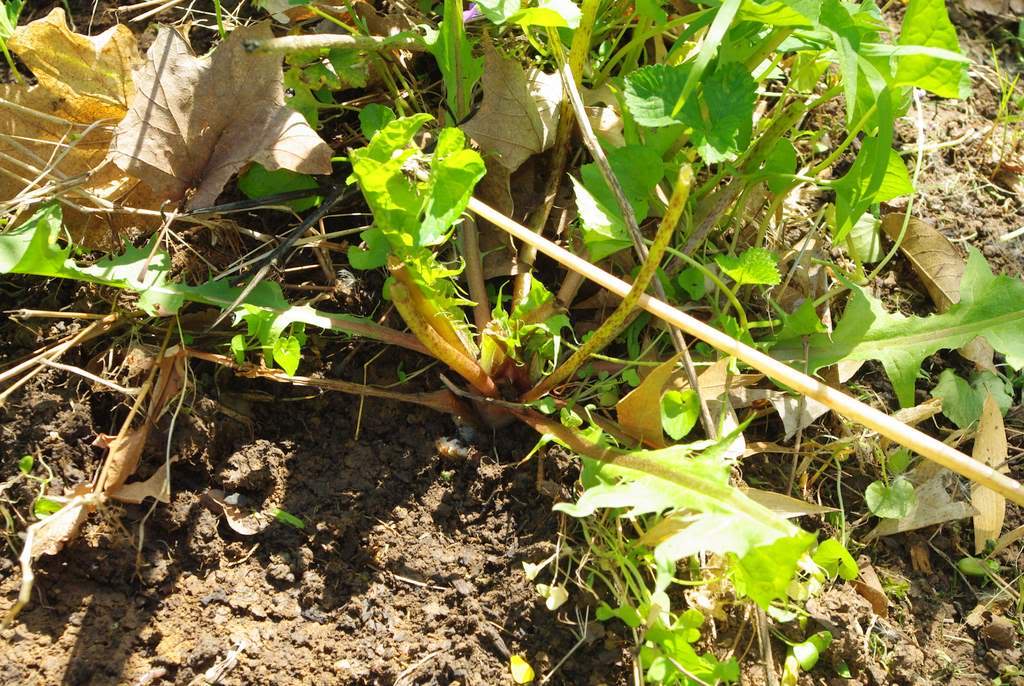
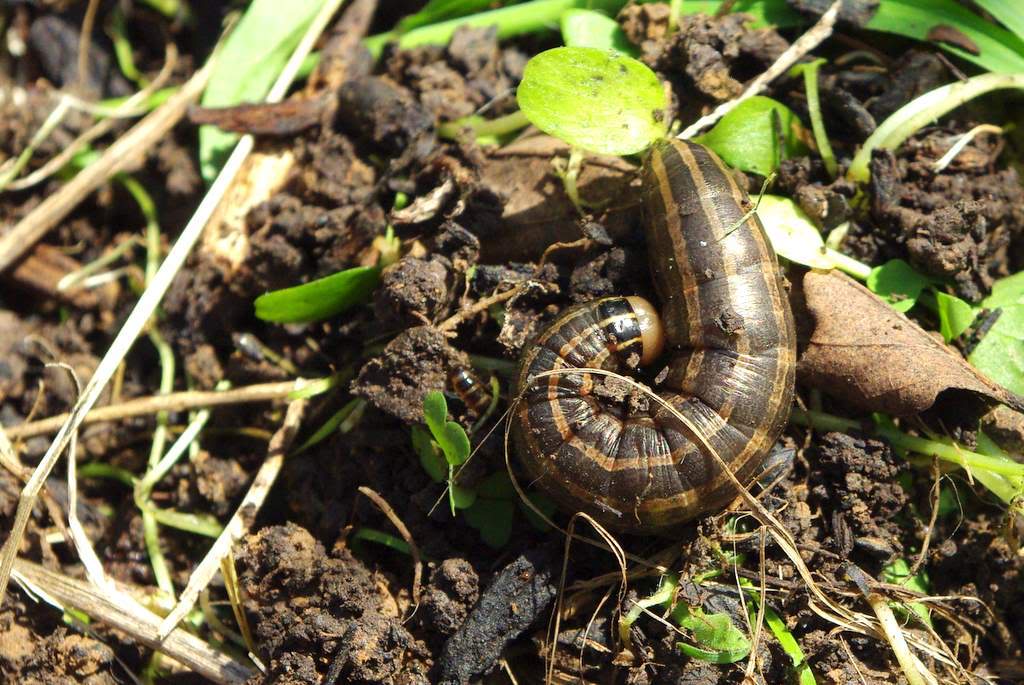
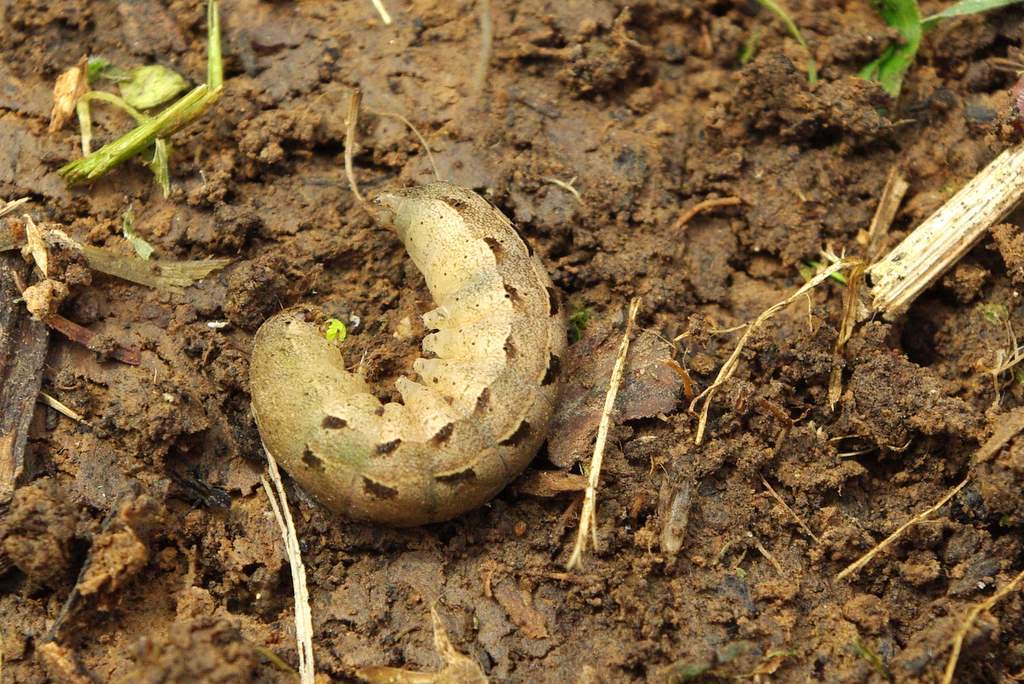
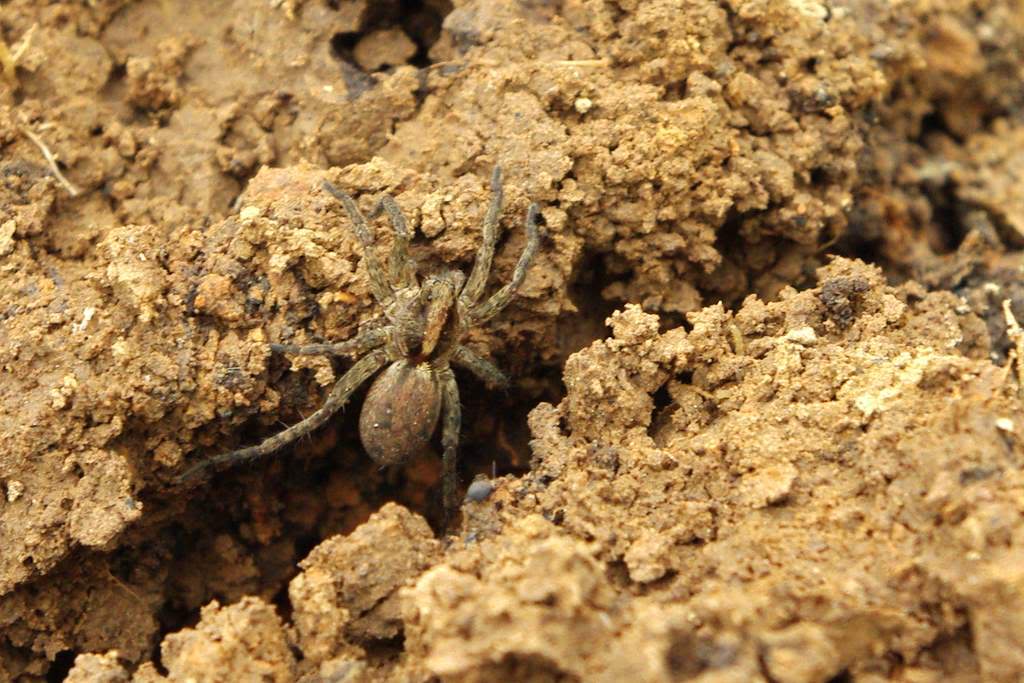
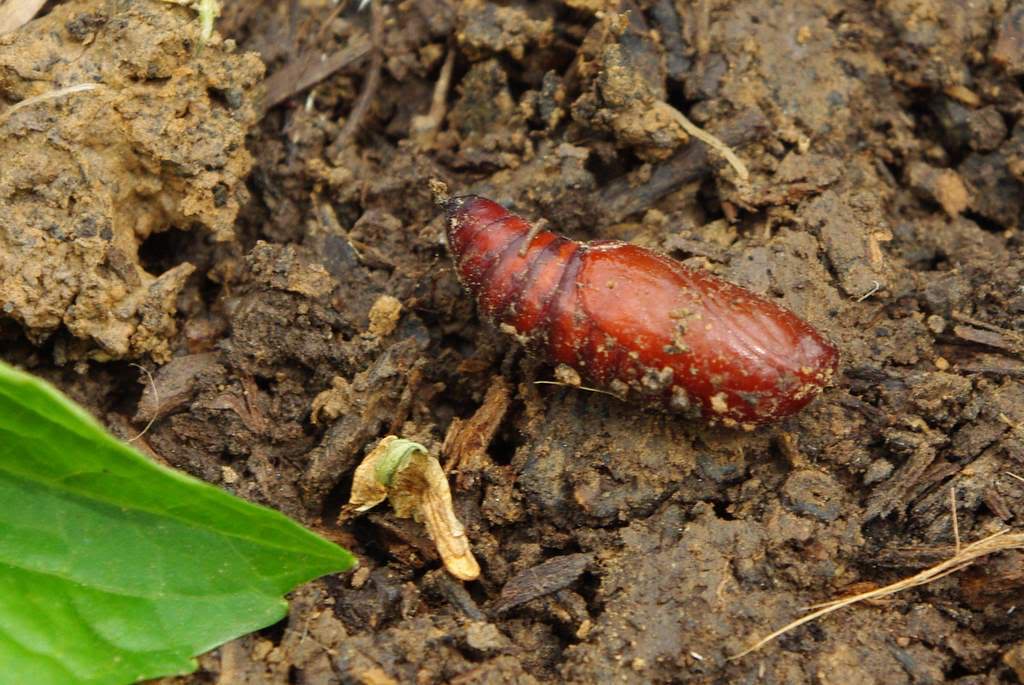

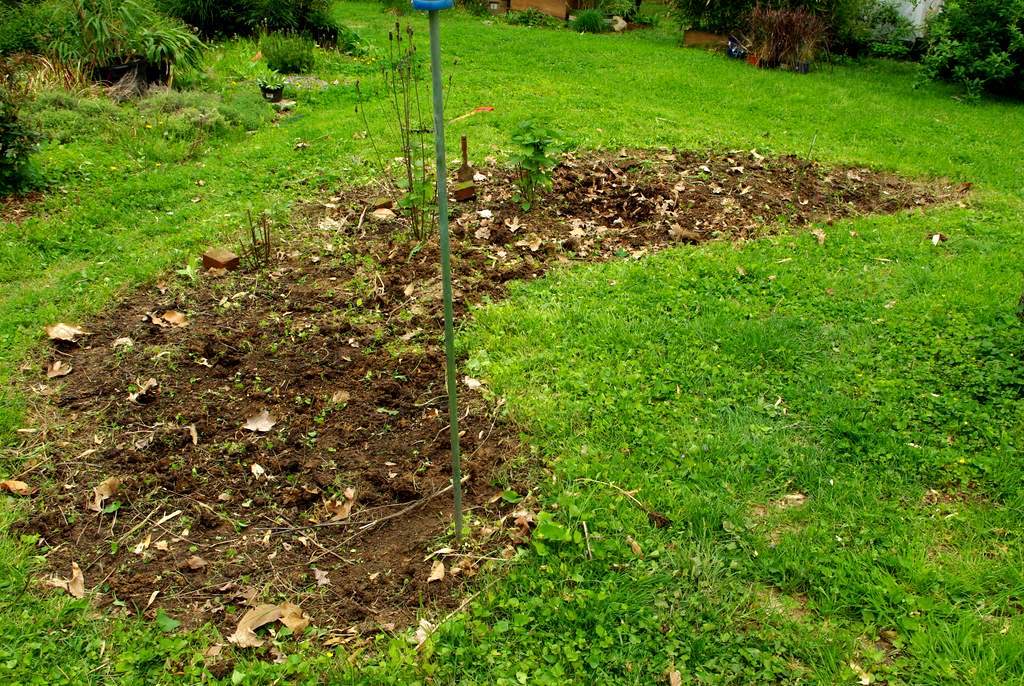
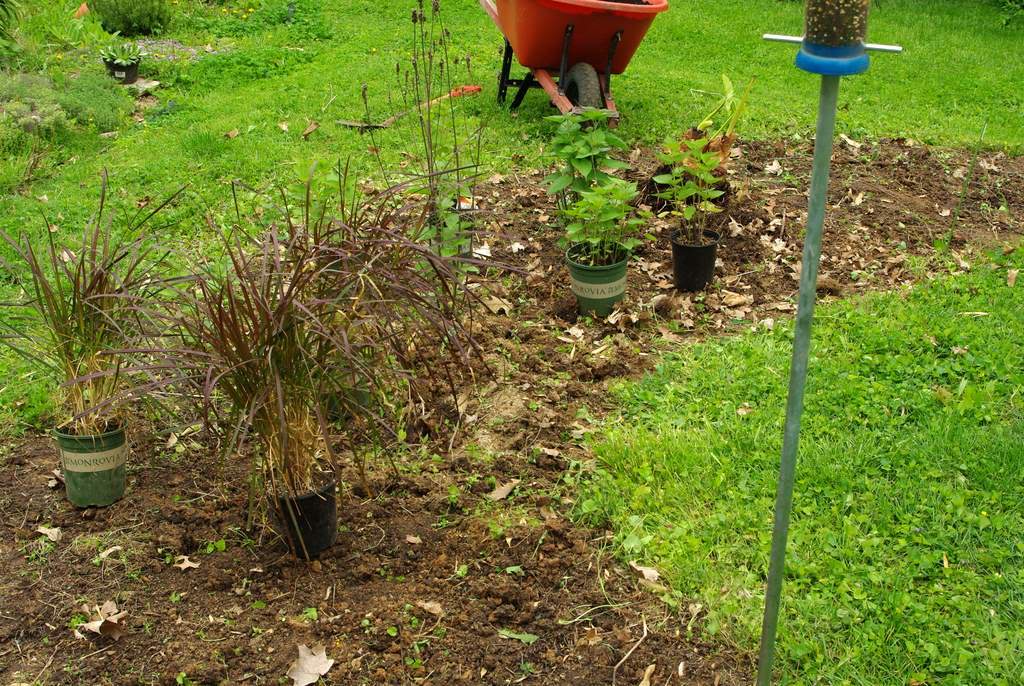
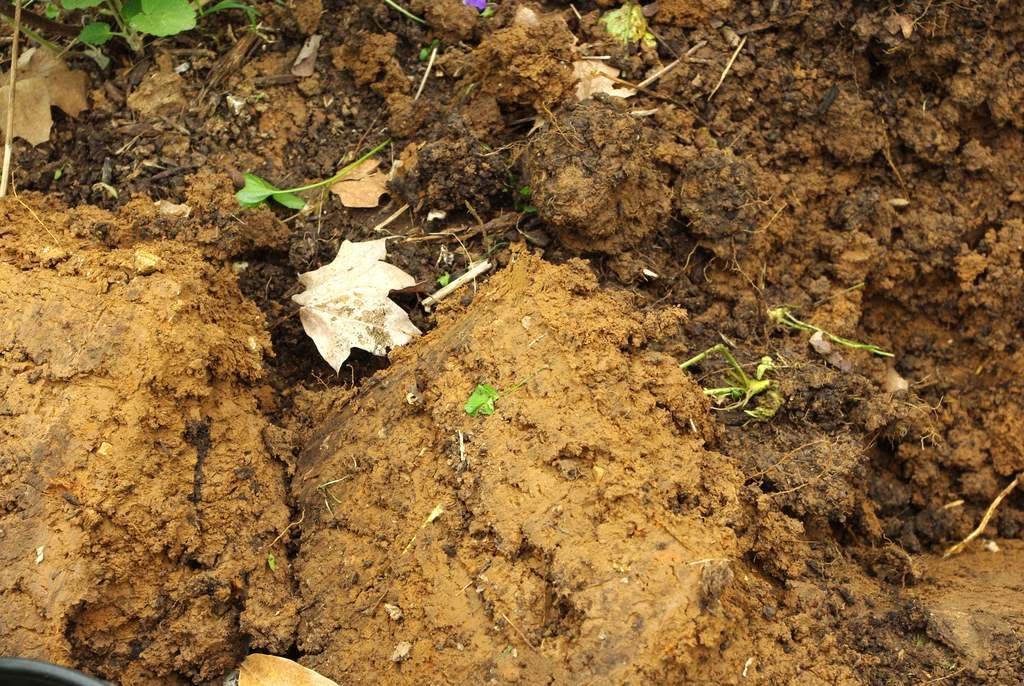
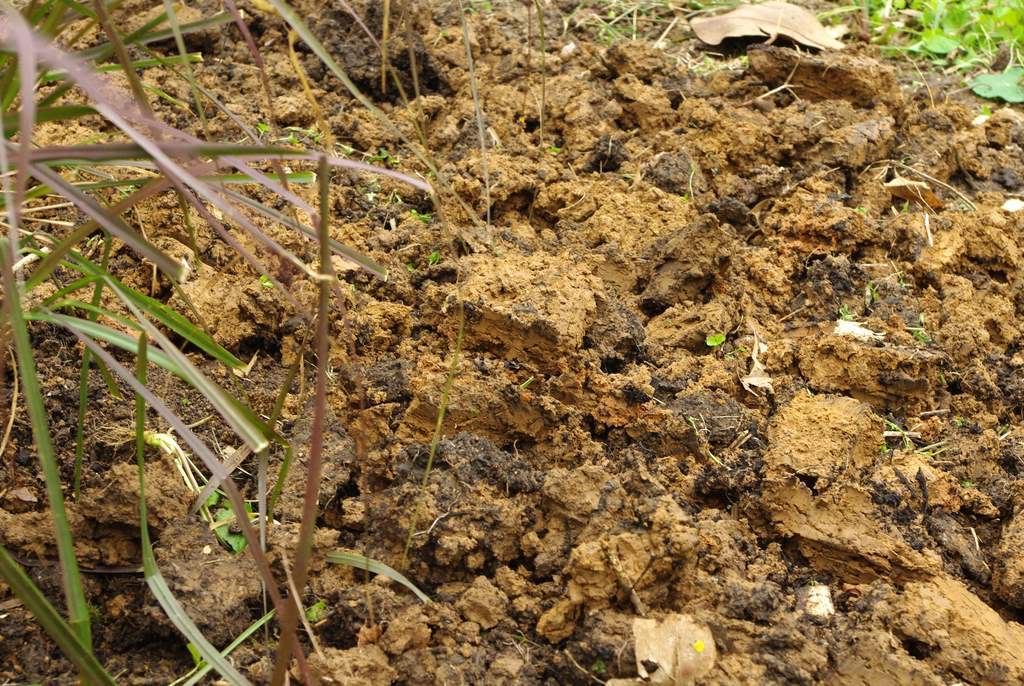

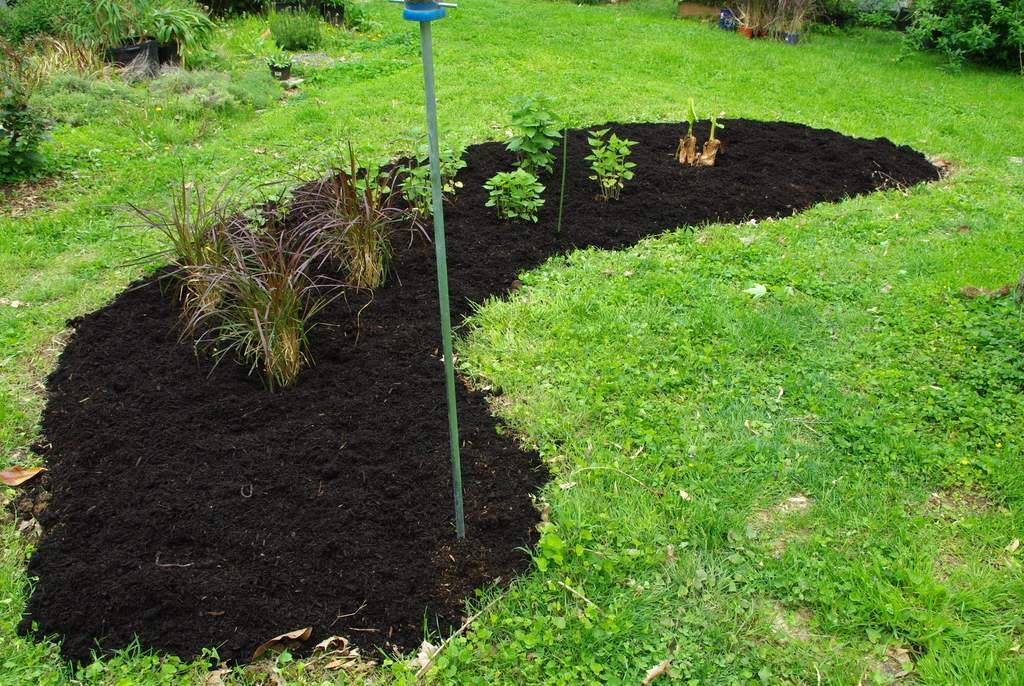
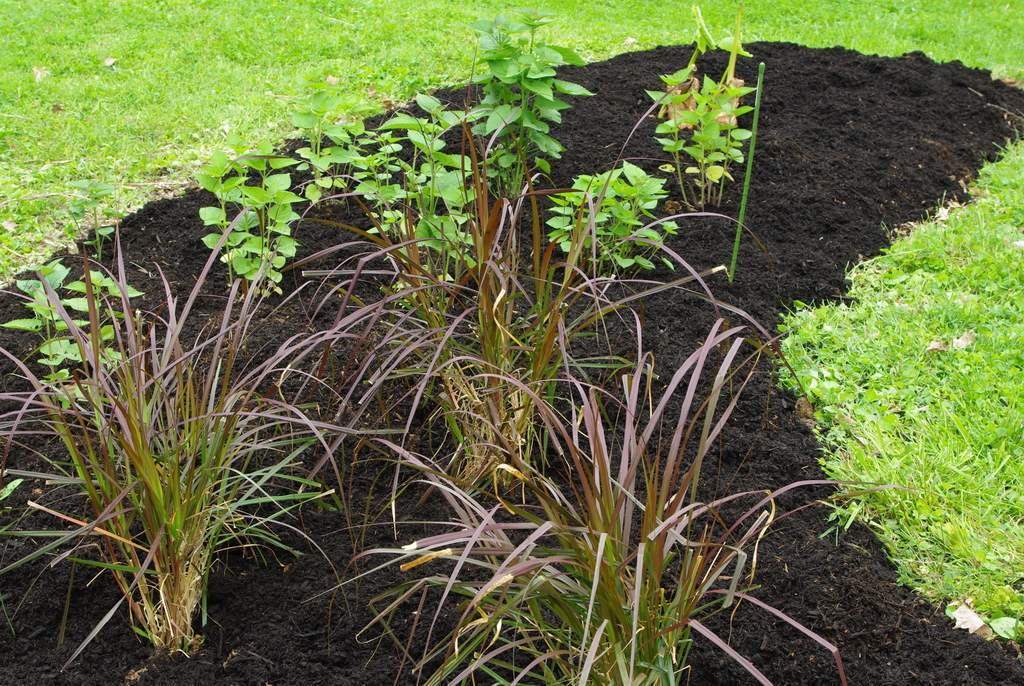




Hi Alan -Looks great - What is that grass you've planted there? (looks a bit like my Shenandoah).
That's Pennisetum setaceum 'Rubrum' or "Purple Fountain Grass". It's not cold-hardy enough for me here so I overwinter cuttings of it inside.
Wow, what a transformation. I love the new bed. Funny how you're not fond of the "black" look; a lot of people here pay extra for black (dyed) mulch :-).
I never understand that. Black is better than red though.
Wow amazing transformation! I hate seeing casualties from my gardening tools too. It's terrible! They will love the new soil you are creating though!
I can certainly empathize, as I've been digging my community plots all day, seeing lots of critters and thick weeds under my shovel too! I saw a few grubs, but the black stripey one you have looks unfamiliar. I hope all that clay doesn't filter back down to the layer that you found. I found a layer of sand under my plot, which was fine by me.
I have my own compost pile that's mostly made from grass clippings and fall leaves, and there's a few tons worth of it now.
I'm planning on using most of it to give my bamboo groves a 2nd dose of fertilization right after they shoot. Looking at my photographs from 2010, pretty much every species has already come up at this date however this year it has been a very late spring, and larger shoots probably take a longer time to develop.
Nice hook, got me to read the story. Found your blog link on the Whimsical Gardener comments. We need more men involved in the gardener blogger world. Your compost is identical to what i get at our municipal recycling center. I like the dark side.
The new bed looks beautiful! The white grub behind the white spider was a Japanese beetle grub. :( Stick them in your birdfeeders and the birds will love you forever!